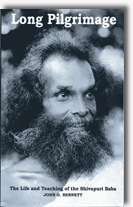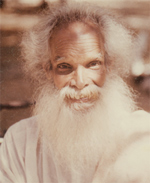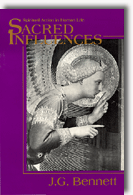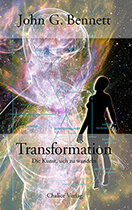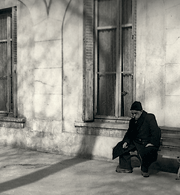Description
Long Pilgrimage: The Life and Teaching of the Shivapuri Baba
Trade Paperback • 188 pages
A wonderful New Edition published in 2006 in Nepal, from where the teaching of the Shivapuri Baba first originated! Nine new rare photographs of the Shivapuri Baba. Bennett writes of a remarkable saint of our time: a 137 year old Indian saint. The guide to Right Living described in this book is extraordinary in its simplicity, yet adaptable to any age or culture.
J.G. Bennett=Author
A guru to remember – Review by Monica Upadhyay – The Kathmandu Post: Sunday, June 18,2006
Long Pilgrimage: The Life and Teaching of the Shivapuri Baba
Publisher: Giridhar Lal Manandhar
A couple of weeks ago, I got hold of John G. Bennett’s Long Pilgrimage-The Life and teaching of the Shivapuri Baba written in collaboration with Thakur Lal Manandhar. First Published in 1965 by a British publishing house Hodder and Stoughton, the book was immensely popular among Britishers and non-natives alike who had a hunger for spiritual guidance, and were devoid of an ability to gain super-consciousness without hand-holding.
The Shivapuri Baba aka Swami Govindanath Bharati was born in a rich Brahmin household in the Indian state of Kerala in 1826. At a tender age of 18, he decided to abandon the world and seek for absolute truth. Here, Bennett is talking of the time when “the future Edward VII was a three-year old infant in Buckingham Palace while the great Indian saint Ramakrishna was ten years old.” Govindananda Bharati followed the “path of Rtambhara Prajna or absolute realization of God beyond all forms and images.” The writer explains that this stage is not reached until there is a progressive elimination of all that support and comfort the mind. He further explains that when all is stripped away, and the soul enters the absolute nakedness that is beyond understanding can it make the final act of the Pure Will whereby all distinctions disappear and all the Individual and the Absolute are made one.
Although an Indian sage, the Shivapuri Baba spent over 40 years of his life in Nepal. There is an interesting account of how he hoodwinked the Ranas and entered a country virtually closed to the foreigners. On March 1926, Swami Govindanath first visited Nepal, accompanied by a horde of Indian Shadhus on their way to pay homage to Lord Pashupatinath. The Indian sage entered Nepal at a time when the country was virtually closed to foreigners and pilgrims alike. Only during the holy festival of Shivaratri, Hindu pilgrims were allowed to enter the country on the condition that they would leave within one week.
Govindananda was highly fascinated by the serenity of the Pashupati temple complex and the jungles lying in the outskirts of the city. On the day of his eventual return to India, He luckily met a Wilkinson who had then become the British resident in Nepal. It was he who coaxed the Rana rulers to let the Indian sage settle in the jungle lying in the outskirts of the city- the place where he would shed his identity of Govindanath Bharati and emerge as the saintly old man of the Shivapuri forest, the Shivapuri Baba. He breathed his last in the same forest retreat in the Himalayan foothills. He died at the great age of 137 years old. The Shivapuri Baba was the first modern yogi to transplant the wisdom of the Indian sub-continent to the West. While on a visit to England, he had no fewer than 18 audiences with Queen Victoria, who was deeply influenced by his ability to make her see beyond “the veil of death.” His stay in England was the longest part of his pilgrimage although he was equally popular across the Atlantic. While analyzing the immense popularity of Govindanath, Bennett rightly observes, “His excellent English, enlivened with the apt stories from the Mahabharata or Ramayana, or even, I suspect, sometimes invented by himself, his quick wit, and his profound wisdom; and no doubt, most of all, the irresistible attraction that the power of sanctity exerts upon even half-receptive people-combined to make him sought after by the hostesses of the end of the century.”
Bennett has listed a number of amusing anecdotes about the Shivapuri Baba. Notably, among them is his visit with the great 20th century dramatist, George Bernard Shaw. Although a learned philosopher, he harbored a deep contempt for saints and their world. Therefore, during his encounter with the Shivapuri Baba, he said, “You Indian saints are the most useless of men; you have no respect for time.” The latter’s reply was something like this, “It is you who are the slaves of time. I live in eternity.” No wonder, the Baba was blessed with a very long life, which, after his awakening at the age of 50, he dedicated entirely to the spiritual welfare of others.
Another anecdote concerns the visit of Indian President Dr Sarvepalli Radhakrishnan on the occasion of King Mahendra’s coronation. Having disembarked from the plane, he straightaway headed towards the retreat of the Shivapuri Baba, of whom he had heard so much. When Radhakrishnan queried about his teachings, which he beautifully summed up in a sentence “I teach three disciplines- spiritual, moral and physical.”
The Shivapuri Baba taught the principle of Swadharma, which believes that as humans we have three principle duties: first, physical duty towards our self. It mainly consists of maintaining body and mind through proper livelihood, including the obligation to help one’s dependents to accomplish the same.
The second is one’s moral duty, consisting in remaining sensitive to the obligation to seek the truth 24 hours a day. And the third, spiritual duty, means the worship of the Divine. He felt certain that if we attend carefully to the first two duties for a decade, we will naturally become able to fulfill the third duty. Physical discipline, he noted, brings pleasure. Moral discipline gives us serenity. Spiritual discipline yields deep peace and ultimate happiness.
The Shivapuri Baba was dismissive of conventional yogic paths, because he saw in them potential distractions that might keep a person from performing the three duties. On closer inspection, his own sensible prescriptions are in fact a form of yoga. Only rare individuals can devote themselves directly to the pursuit of enlightenment. “All of Yoga, in a way, is preparation for our final hour on earth. It matters how we exit from life, because death is only a doorway to another state of existence.”
Most people, who live householder lives, need to take care of the first two duties, which are in preparation of the third sacred obligation. His emphasis on the moral disciplines strikes a positive chord, because all authentic yoga regards morality as the foundation of the spiritual path. We can also readily agree with the Shivapuri Baba’s insistence on becoming a fully functional member of society. All too often the spiritual quest is engaged as a neurotic escape from conventional life, which cannot possibly lead to inner freedom.
I found myself admiring the Shivapuri Baba more and more, as I read this book launched in Nepal for the first time by Giridhar Lal Manandhar, the son of Thakur Lal Manandhar. As Giridhar himself mentions, it is a matter of pride that an edition has been published for worldwide distribution in a country from where the Shivapuri Baba started his teachings.

